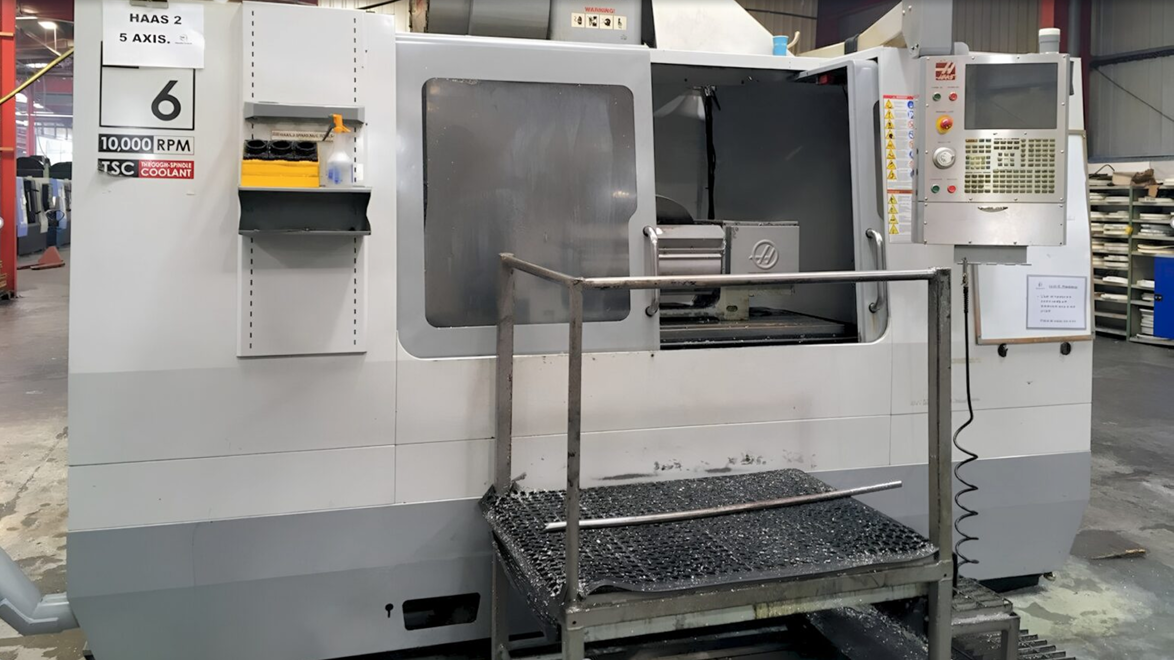Tools for growth: Malben Engineering’s
tool and die making foundation sets the
pace for the future!

A strong tool and die making foundation equips Malben Engineering, a Tier 1 automotive
component manufacturer, to collaborate with Original Equipment Manufacturers (OEMs) and
global toolmakers on new tooling, while also providing in-house support for manufacturing,
according to Technical Director Marco Smargiasso.
“Malbenʼs vertical integration and investment in its tool and die making (TDM) capability is a key
differentiator, especially because South Africa is short on TDM skills,” Smargiasso says.
This is according to the INTSIMBI National Tooling Initiative: a national, multi-stakeholder
initiative which was established under the auspices of the South African Department of Trade
Industry and Competition (the dtic) and the Production Technologies Association of South
Africa (PtSA) to implement a turnaround strategy for South Africaʼs distressed tooling industry,”
he adds.
A strong foundation
Malben started out as a tool and die maker in 1974, and – unlike many tool and die makers at the
time – then transitioned successfully into mass automotive component production. However,
also unlike many current competitors, the company still retains and continues to invest in TDM
as an in-house support service.
Smargiasso attributes the local TDM deficit to a lack of economies of scale: “To have a stable
TDM business, you need consistent work flow. In the automotive component sector, it tends to
be a ‘feast or famineʼ scenario. When an OEM launches a new vehicle, tool and die making is in
demand, and locally there are not enough suppliers.
Then, there is typically also a big gap between model launches – and another challenge faced
by TDM businesses is that the OEMs tend to carry over many parts from old to new models
with model life cycles typically ranging from 7 to 10 years. With no new tool and die making
demand, tool and die makers cannot survive.”
While South Africa is home to 7 major OEMs that make approximately 600 000 vehicles per
year, Chinaʼs 16 OEMs produce over 30 million.
Furthermore, a decline in TDM is not unique to South Africa, Smargiasso adds: “With the largest
automotive industry in the world, China has out-competed TDM sectors globally – and OEMs
now outsource most tooling for new models to China.”
Malbenʼs significant step-change – expanding its manufacturing capability in 2021/22
followed the launch of new vehicle models by its largest OEM client, which required more than
200 new tools. Malben produced 40 of those tools – significantly more than its local
competitors.
The company has also created a tooling facility to maintain and make replacement components
for the tools used in production: “We would not be able to run our manufacturing operation
Over the past two years, the main investment has been in reverse engineering software: “Our
tool room handles repairs and improvements. We have found slight discrepancies between
computer-aided draughting (C.A.D.) models received from China, and the tool itself. So, we take
the original and reverse engineer it, making any adjustments based on that,” Kottikkal explains.
Tooling up for the future
Smargiasso emphasises the value of Malbenʼs historical experience in tool and die making: “We
use this to analyse the tool designs presented to us by Chinese manufacturers. We make sure
that the designs will deliver the correct product quality and run capacity,” he says.
He believes that the 80/20 principle applies: “We determine 80% of your project cost within the
first 20% of the actual life-cycle. By getting the quality and the tooling design correct up front,
the home-line trials, customer sign-off and approval process goes smoothly. More importantly,
it means that for the rest of the project life – normally 10 years – we do not have a tool that
becomes an “albatross around our neck.”
Commercial Director Marius Schafer concurs: “Even though we do not have the capacity to
manufacture very large tools, we continue to invest in the intellectual property – knowledge and
expertise – needed to manufacture high-quality parts. As a Tier 1 supplier, Malbenʼs value-add
and differentiator for our customer includes meticulously reviewing the tooling for functionality,
robustness, durability and in terms of process layout.”
This is achieved via process modelling and stamping simulations. This was somewhat
complicated by the Covid-19 pandemic, when Malben liaised with a tool shop in China
thousands of kilometres away, remotely.
Continued investment
To remain up to date, Malben is also still investing in equipment – for example, planning for the
installation of a new 2 500 ton press.
“Because of ourtooling expertise and upgraded technologies, our internal investment in people
and skills, intellectual property and in leveraging different linkages and partnerships, we can
quickly pivot as required, adopting and incorporating any new technologies on the market,”
Smargiasso concludes.







